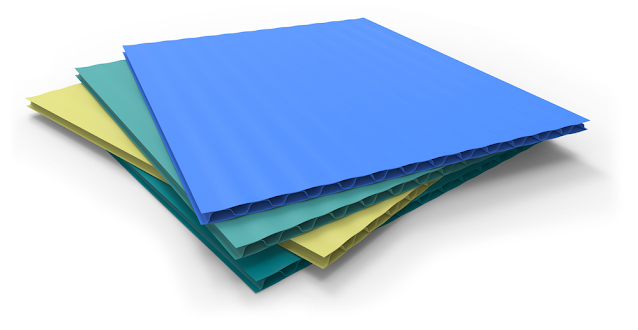Acrylic sheets are a popular material choice in various industries, from automotive to construction, due to their versatility and durability. Acrylic sheets can be manufactured in different forms, including extruded and cast, with each type offering unique benefits. In this blog post, we will discuss the advantages of cast acrylic sheets and why they are a clear winner for your projects.
First, let's understand what cast acrylic
sheets are. Cast acrylic sheets are made from a liquid acrylic that is poured into
a mold and then cured in a controlled environment. This process results in a
material that is denser and more consistent in thickness than extruded acrylic
sheets. The curing process also eliminates stresses that can cause distortion
and cracking, making cast acrylic sheets
more resistant to impacts and weathering.
Now, let's dive into the advantages of cast
acrylic sheets.
- Optical Clarity
One of the most significant advantages of
cast acrylic sheets is their optical clarity. Cast acrylic sheets have a transparency
rate of up to 93%, which is higher than that of glass. This high transparency
makes cast acrylic sheets an ideal material for use in applications where
optical clarity is crucial, such as in aquariums, display cases, and signage.
- UV Resistance
Cast
acrylic sheets are also highly resistant to UV
radiation. This means that they do not yellow or become brittle over time when
exposed to sunlight, making them an excellent choice for outdoor applications.
UV-resistant cast acrylic sheets are commonly used in outdoor signage,
skylights, and windows.
- Impact Resistance
Cast
acrylic sheets are highly impact-resistant, making
them an excellent choice for applications where durability is crucial. Cast
acrylic sheets can withstand impacts up to 17 times stronger than traditional
glass, making them a safer option for high-traffic areas or areas prone to
accidental impacts.
- Chemical Resistance
Cast acrylic sheets are highly resistant to
chemicals, including acids and alkalis. This makes them an excellent choice for
use in laboratories, medical facilities, and other environments where chemical
exposure is a concern.
- Easy to Fabricate
Cast acrylic sheets are easy to fabricate,
making them a popular material choice for a wide range of applications. They
can be easily cut, drilled, and thermoformed to fit specific project needs.
This versatility makes cast acrylic sheets a popular choice for applications
such as lighting fixtures, furniture, and displays.
- Lightweight
Cast acrylic sheets are lighter than glass,
making them easier to transport and install. This lightweight property also
makes cast acrylic sheets an ideal choice for applications where weight is a
concern, such as in aircraft windows or marine applications.
- Low Maintenance
Cast acrylic sheets require minimal
maintenance, making them a popular choice for applications where regular upkeep
is not feasible. They are easy to clean, and scratches can be easily polished
out, maintaining their optical clarity over time.
Conclusion
In conclusion, cast acrylic sheets offer a range of advantages that make them a
clear winner for your projects. From optical clarity and UV resistance to
impact resistance and chemical resistance, cast acrylic sheets are a versatile
and durable material choice. They are easy to fabricate, lightweight, and low
maintenance, making them an ideal choice for a wide range of applications.
Whether you are looking to create signage, display cases, or outdoor fixtures,
cast acrylic sheets are an excellent choice that will offer long-lasting
durability and exceptional performance.
Need cast acrylic sheets for your next
project? Get in touch with AKMY Polyplast, one of the leading cast acrylic sheet manufacturers in India,
for high-quality and durable cast acrylic sheets.



.png)







